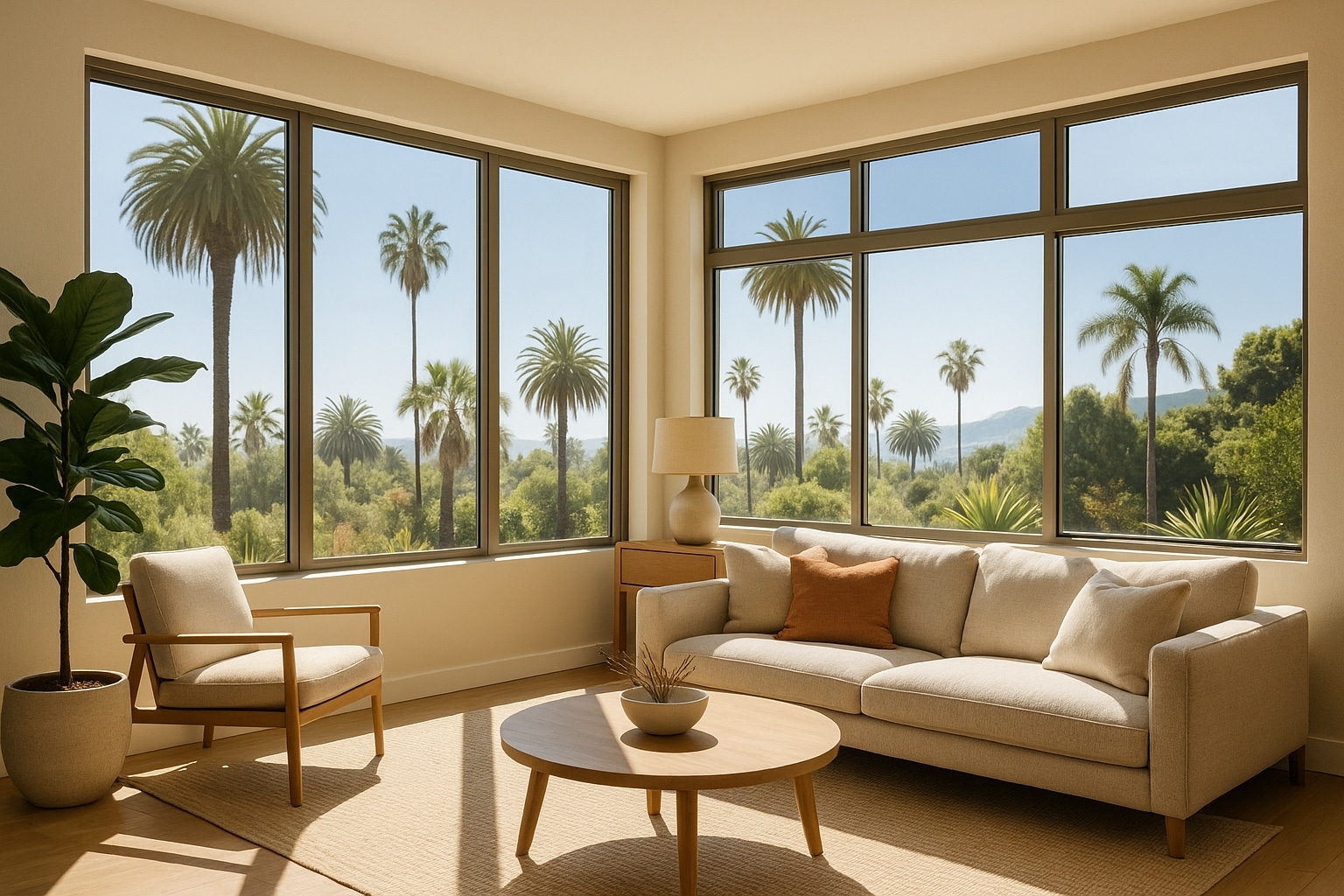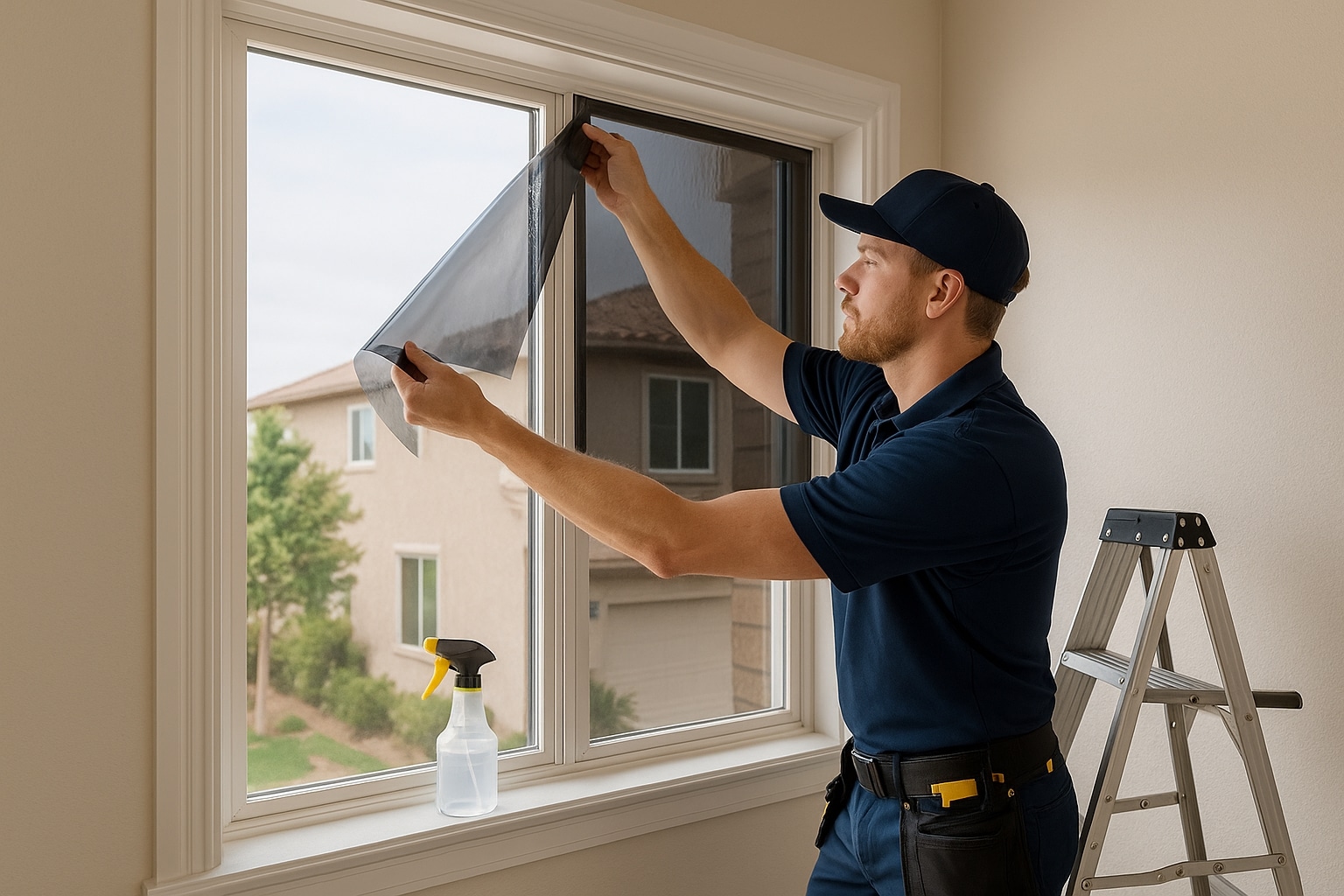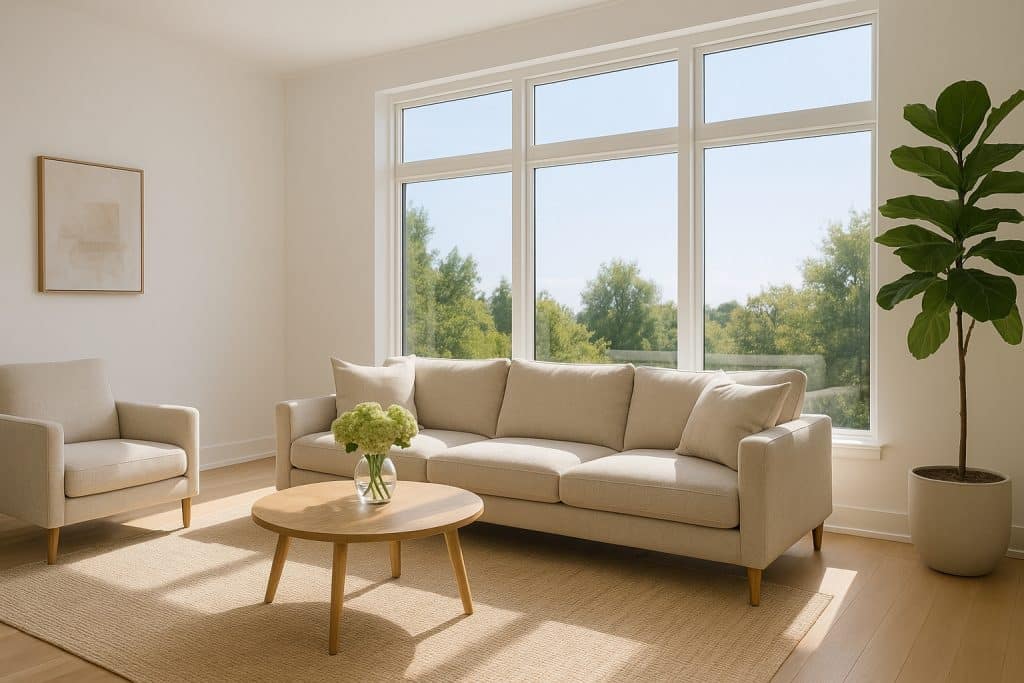
Why Window Tinting Matters in Southern California
San Diego and the broader Southern California region enjoy abundant sunshine—great for lifestyle, but challenging for homeowners. UV rays, glare, and excessive heat can cause discomfort, faded furniture, and soaring energy bills.
Installing window tint for home windows offers an effective way to combat these problems while adding a sleek, modern aesthetic.
Key Benefits:
- UV Protection: Blocks up to 99% of harmful UV rays.
- Energy Efficiency: Reduces solar heat gain and cooling costs.
- Glare Reduction: Improves comfort for screens and daylight visibility.
- Privacy: Enhances seclusion during the day.
- Safety: Helps hold shattered glass together during accidents or break-ins.
Understanding the Types of Residential Window Tint
There’s no one-size-fits-all solution when it comes to window film. Each type offers specific benefits:
1. Dyed Window Film
- Budget-friendly
- Basic UV protection and privacy
- May fade over time
2. Metalized Window Film
- Reflects heat and light
- Durable and scratch-resistant
- May interfere with Wi-Fi and cell signals
3. Ceramic Window Film
- Premium quality
- High heat rejection with excellent clarity
- Does not interfere with electronics
4. Spectrally Selective Film
- Tailored for visibility and performance
- Blocks UV and infrared light while allowing visible light
- Ideal for scenic SoCal views

How to Choose the Right Film for Your Needs
Consider these questions before choosing:
- What’s your primary goal? (privacy, glare reduction, energy savings, etc.)
- What direction do your windows face?
- Do you have HOA or historic restrictions?
- Are aesthetics or visibility a priority?
Examples:
- For maximum privacy: Go for a reflective or darker dyed film.
- For heat control without darkening: Ceramic or spectrally selective films are ideal.
- For living rooms with views: Use neutral or light ceramic tints that preserve brightness and scenery.
Legal Considerations and Local Climate Factors
California Tinting Regulations
While regulations for residential window tint are generally more relaxed than for vehicles, there are still considerations:
- HOA guidelines
- Historic home restrictions
- Local building codes, such as California Title 24 (energy efficiency)
Climate Considerations
Southern California’s climate makes heat rejection a top priority. Look for films with:
- High solar heat gain coefficient (SHGC) reduction
- Low U-values
- UV blockage above 99%

Professional vs. DIY Window Tinting
DIY Pros:
- Lower cost
- Flexible timeline
DIY Cons:
- Can lead to bubbling, misalignment, and wasted material
- Challenging for large or high windows
Why Go Pro in San Diego:
- Access to high-performance films not sold retail
- Experienced installers can recommend products tailored to SoCal sun intensity
- Most professionals offer warranties for both materials and installation
For long-term performance and aesthetics, professional installation is highly recommended.
Getting the Most from Your Window Tint Investment
Once you’ve selected your window tint, make sure you maintain it for longevity and clarity:
Aftercare Tips:
- Wait 30 days before cleaning newly installed film.
- Use ammonia-free window cleaner and soft microfiber cloths.
- Avoid abrasive materials that can scratch or degrade the film.
Return on Investment:
- Many homeowners see 10–30% reduction in cooling costs.
- Prolonged lifespan of furnishings, flooring, and art.
- Enhanced home resale value with modern energy upgrades.
Final Thoughts
Installing window tint for home windows is one of the smartest upgrades for Southern California homes. Whether you’re seeking privacy, heat control, or a sleek modern look, there’s a perfect film to meet your needs.
With the right product—and even better, the right local installer—you can enjoy cooler rooms, lower bills, and peace of mind all year long.

